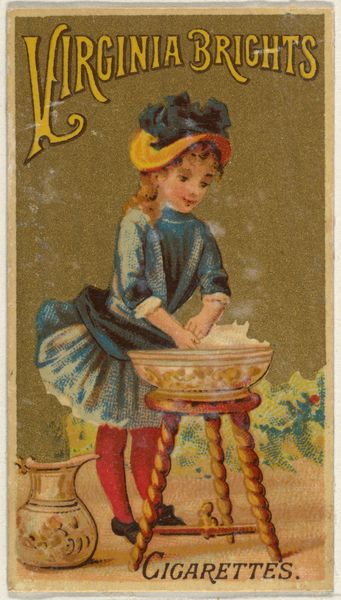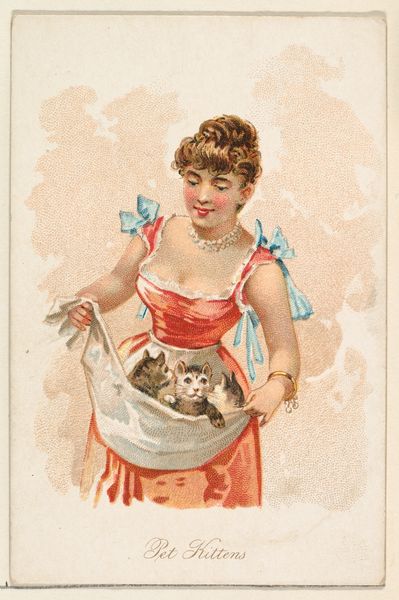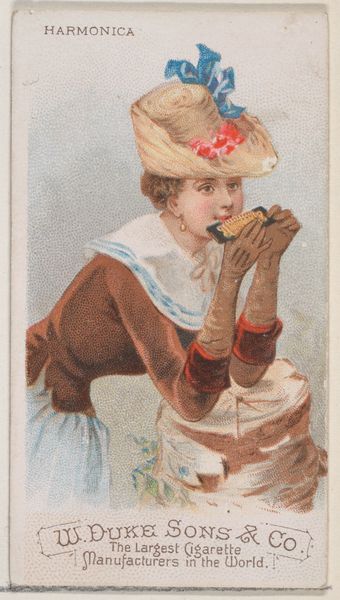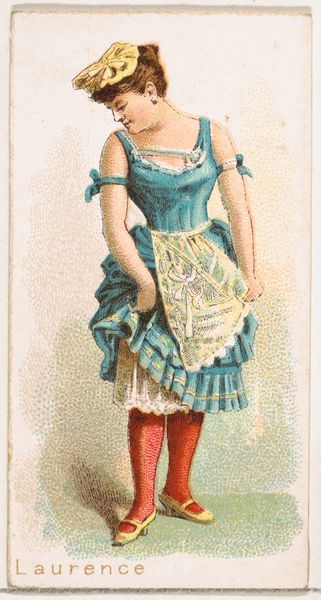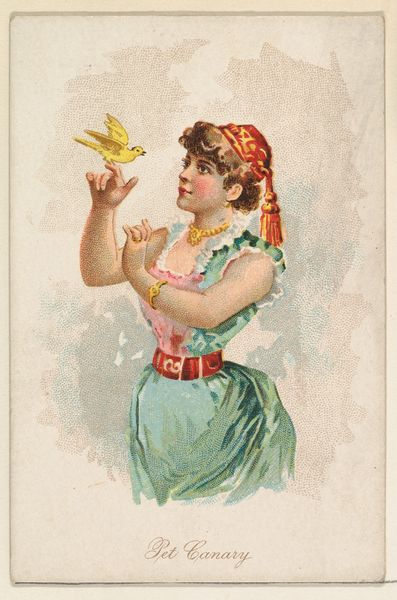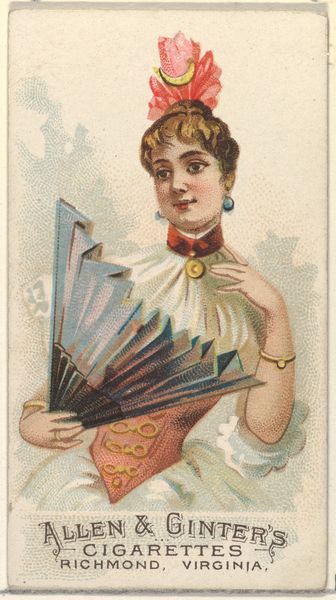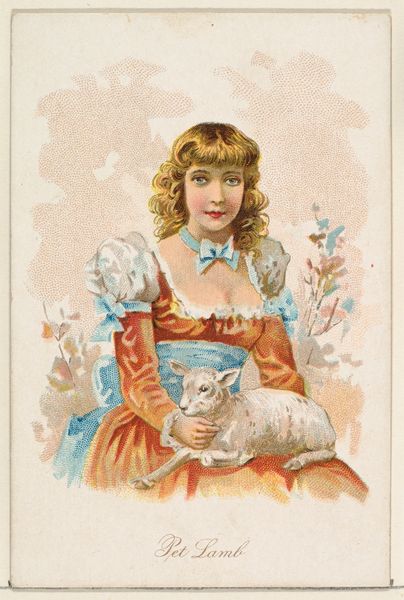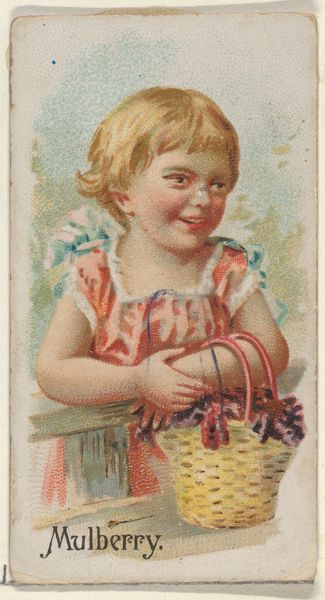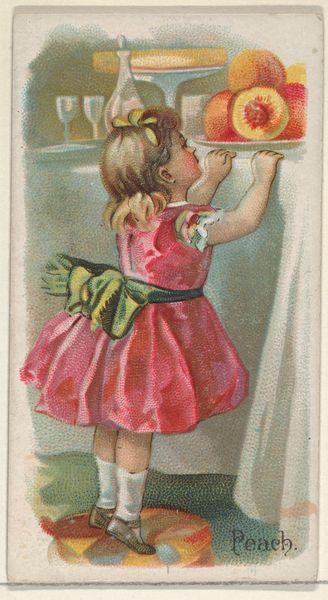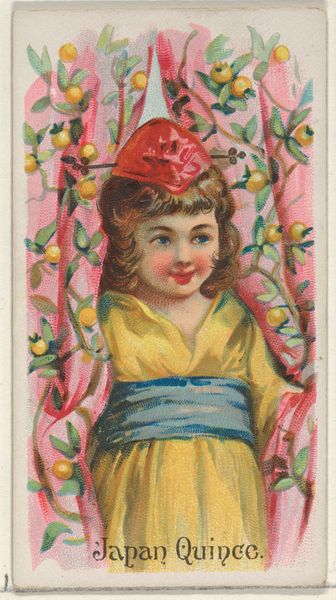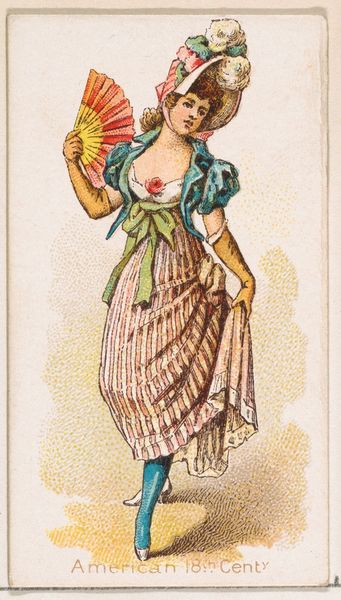
Pet Goldfish, from the Household Pets series (N194) issued by Wm. S. Kimball & Co. 1891
0:00
0:00
Dimensions: Sheet: 3 3/4 × 2 1/2 in. (9.5 × 6.3 cm)
Copyright: Public Domain
Editor: This is "Pet Goldfish" from the Household Pets series, printed in 1891 by William S. Kimball & Co. It’s a coloured-pencil drawing used for a print, and it's surprisingly charming! The woman gazing at her fish seems so absorbed. What's your take on why these images were so popular at the time? Curator: Well, consider the social context. This was during a period of increasing industrialization and urbanization. Images like "Pet Goldfish" romanticized domestic life and offered a vision of refined leisure, which were aspirational values for the rising middle class. Cigarette cards like these were like little windows into a desirable lifestyle. Editor: So, it's selling an image of class, not just cigarettes? Curator: Precisely! The composition directs our gaze towards the goldfish, symbols of luxury and the exotic, but also towards the woman herself. Note her dress, her hairstyle – they're carefully constructed to project an image of fashionable respectability. The “Household Pets” series normalized pet ownership as a marker of status. How does the artwork connect with other popular depictions of women in advertising? Editor: It's interesting. I can see it in contemporary advertising now—the use of imagery to imply the kind of life someone might lead, with that product being the missing piece. Only in this case it's cigarettes and not social media! Curator: Exactly! So the artwork not only reflected social norms but also actively participated in shaping them through its broad circulation. These trading cards promoted very specific values. Editor: I see. It’s more than just a pretty picture; it reflects how society viewed itself and wished to be viewed. It makes me think about what today’s equivalent might be and what values they promote. Curator: Indeed. Understanding these images means unpacking the complex social narratives they carry, narratives about gender, class, and consumerism.
Comments
No comments
Be the first to comment and join the conversation on the ultimate creative platform.
